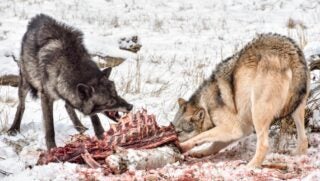Tangled like sweet potato vines in a set of cultivators, the roots of country-western music and American agricultural are inseparable. And like the late John Denver, many farmers across America likely shout the glad refrain, “Thank God I’m a country boy,” while wearing baseball caps colored John Deere green and baling hay. And as the agricultural community has changed over the years, so has the tune of a genre that tells its tale of its peoples. But the heart and the heritage remain.
Hills, ‘hollers and the Roaring ’20s
The genre of country-western music was ostensibly born in the 1920s around Nashville, Tennessee, as technology afforded radio stations their spread. But the roots of hillbilly music go back further into the hills and ‘hollers of Old World countries like Ireland, Scotland, and England, carried to America by immigrants accustomed to fiddles and pipes. The tradition of English ballads, or story songs, blended into the landscape of America’s south, particularly Appalachia, and found an eager partner in the spirituals and jazzy blues of African-American traditions, which introduced such instruments as the banjo.
By the 1920s, radio stations and recording studios allowed what was still largely viewed as music of the mountains and southern hills to be spread across the nation. The blending of musical traditions which continues within the genre today started out with contributions from gospel, folk, jazz, Mexican music, and, perhaps most notably, the western cowboy song.
Jimmie Rodgers, often credited as the “Father of Country Music,” was an early superstar who brought traditions from his own Mississippi home to the nation by way of songs such as “Peach Picking Time, “Roll Along Kentucky Moon,” and “Yodeling Cowboy.” Famous for songs about railroads and travels about the rural landscape, Rodgers’ yodeling sound spanned the 1920s and early ’30s alongside that of the now legendary Carter Family, country music’s first famous vocal group. Originally composed of A.P. Carter, his wife, Sara, and her sister Maybelle, it was Maybelle’s daughter June who would go on to marry Johnny Cash and continue the tradition into the modern era, with numerous relatives involved in the business including Rosanne, John Carter Cash, Cindy including their son-in-law, Marty Stuart, former husband of Cindy.
This country music was often accompanied with the bluegrass music growing up around it, likewise born of Irish, Scottish and English settlers who had migrated to the Americas even as early as the 1600s. Noted for its use of fiddles, banjos, and mandolins, bluegrass music was fronted by Bill and Charlie Monroe and the Blue Grass Boys and eventually came to the Grand Opry Stage in the 1930s. The fiddle work and pickin’ of bluegrass music was often unaccompanied by lyrics and served as its own musical style in many cases.
Meanwhile, out west, dance halls were being influenced by western swing, being made famous by Texan Bob Wills and his Texas Playboys. Whereas country music of the same early 1920s was born of the mountains, this western counterpart was an outgrowth of Dixieland jazz, swing, and cowboy songs augmented with drums and steel guitars meant for dancing in halls and clubs.
The common roots of these formats in the country’s South, Midwest, and Western rural areas gave them the same audience and would ultimately become nearly one and the same in terms of reference, as modern fans use the term country-western music.
Songs about Culture
From its inception in the rural locations of America, country-western music shaped its culture as much as it was shaped by it. By the 1960s and ’70s, the television series “Hee Haw” served as in this regard with both comedy and genuine music, featuring top artists and those emerging alongside bales of hay and barns, with Grandpa Jones singing “Mountain Dew,” which explains one of America’s earliest uses for corn. Likewise, Buck Owens and Roy Clark, who served as hosts for the program’s 26-season run, which spanned 1969 through 1992 producing 655 episodes out of Nashville, near the fictional “Kornfield Kounty” in which the show was set. Country star Loretta Lynn, the first guest star of the show, holds the record for appearances with 24, with Tammy Wynette coming in second at 21, and Garth Brooks appearing four times between 1990 and 1992.
Throughout the 1980s, family farms across the country began undergoing structural changes similar to many of the small, family-owned businesses in the rural towns country-western made famous. In 1985, country-western and folk rock artists joined forces for the inaugural Farm Aid Concert series. The flight from farms by younger people was sung about by Waylon Jennings in 1990 in the song “Where Corn Don’t Grow” as an explanation of younger rural American’s desire to go to the city, only to find that life wasn’t quite what they thought it would be there. Chris LeDoux’s song, “Cadillac Ranch” in fact jokingly describes the modern ag-tourism as a struggling family farm converts itself into a music hall and bar, and Montgomery Gentry made celebrated those stubborn farmers who refused to surrender their heritage with “Daddy Won’t Sell the Farm,” even as subdivisions pop up around him.
Still, as the second decade of the 21st century nears a close though, the ties between country-western music and the ever-changing agricultural and rural communities remains as hot as George Jones’ “White Lightening.” The hearkening call of Americana rings as true today as it did when John Denver sang, “Take me Home, Country Roads,” and though the technology involved continues to evolve, many still agree that tractors remain pretty sexy.



